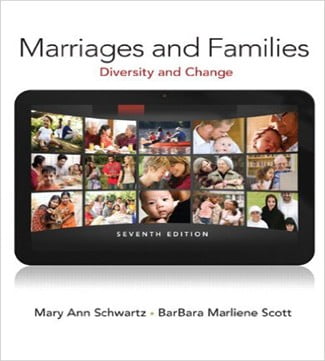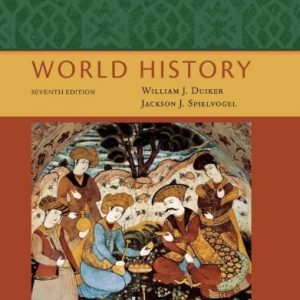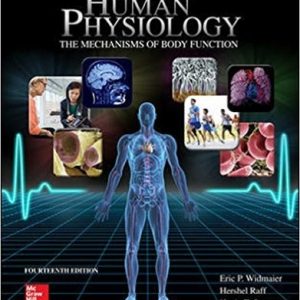This is completed downloadable of Marriages and Families 7th Edition Schwartz Scott Test Bank

Product Details:
- ISBN-10 : 0205845304
- ISBN-13 : 978-0205845309
- Author:
Marriages and Families: Diversity and Change, 7th edition, challenges students to examine their personal belief systems and societal views.
Using an engaging narrative and sociological approach, the text integrates race, class, and gender into the discussion of family experiences. It guides students to make informed choices and decisions about their own marriage, family, and intimate relationships.
A better teaching and learning experience
This program will provide a better teaching and learning experience–for you and your students. Here’s how:
- Personalize Learning–The New MyFamilyLab delivers proven results in helping students succeed, provides engaging experiences that personalize learning, and comes from a trusted partner with educational expertise and a deep commitment to helping students and instructors achieve their goals.
- Improve Critical Thinking — “What Will You Learn” learning objectives open each chapter and help to guide students through the material they can expect to master in each chapter.
- Engage Students — Contemporary stories about real people helps students connect to the material.
- Explore Theory — Using a sociological and feminist perspective, the authors encourage students to apply the sociological imagination and marriage and family theories to their everyday lives.
- Support Instructors — An Instructor’s Manual, Test Bank, PowerPoints, and the New MyFamilyLab support instructors.
Table of Content:
CHAPTER THREE
UNDERSTANDING GENDER: ITS INFLUENCE IN INTIMATE RELATIONSHIPS
| True/False | Multiple Choice | Short Answer | Essay | Total Qs
|
|
| Remember | 23 | 49 | 0 | 72 | |
| Understand | 7 | 12 | 1 | 20 | |
| Apply | 7 | 1 | 8 | ||
| Analyze | 1 | 2 | 3 | ||
| Evaluate | 1 | 1 | |||
| Create | |||||
| 30 | 69 | 0 | 5 | 104 |
TRUE-FALSE
- The sociological term used to define such designations as mother, husband, and student is status.
Answer: True
Page:61
Difficulty=1
- Your position as a student would be considered an ascribed status.
Answer: False
Page: 61
Difficulty=2
- Role expectations are determined by the individual and not by society.
Answer False
Page: 61
Difficulty=2
- The statement “All women are emotional” would be considered a stereotype.
Answer: True
Page: 61-62
Difficulty=1
- Our status in society has no real impact on our lives.
Answer: False
Page: 61-62
Difficulty=2
- The status of being female or male in our society affects all aspects of our lives.
Answer: True
Page: 62
Difficulty=1
- Sex refers to the attributes of femininity and masculinity.
Answer: False
Page: 63
Difficulty=1
- Intersexuality occurs in every society.
Answer: True
Page: 63
Difficulty=1
- Sex reassignment has been shown to be extremely successful for intersexed people.
Answer: False
Page: 64
Difficulty=2
- People who believe they are living in the body of the wrong sex are known as transvestites.
Answer: False
Page: 64
Difficulty=1
- Anthropologists have found evidence of a third gender in some cultures.
Answer: True
Page: 65
Difficulty=1
- Traditional American views of masculinity and femininity have usually been associated with White, middle- class heterosexuals.
Answer: True
Page: 66
Difficulty=1
- We are seeing new, widespread beliefs about equality in male and female roles.
Answer: True
Page: 68
Difficulty=2
- A major tenet of social learning theory is that a reinforced behavior is likely to be repeated.
Answer: True
Pages: 70
Difficulty=1
- A child who copies her parents’ mannerisms is engaging in a form of behavior called modeling.
Answer: True
Page: 70
Difficulty=2
- Parents sometimes unintentionally socialize their children along narrow, traditional gender lines.
Answer: True
Page: 70-71
Difficulty=1
- Toys and games are sometimes used to differentiate boys from girls.
Answer: True
Page: 71-73
Difficulty=1
- Girls prefer same-sex play groups, while boys prefer mixed-sex play groups.
Answer: False
Page: 74
Difficulty=2
- Recent research found that playing with “masculine” toys and games and playing in predominantly male or mixed-gender groups had no bearing on women becoming college athletes.
Answer: False
Pages: 75
Difficulty=1
- Teachers often structure classroom activities along sex segregated lines.
Answer: True
Page: 75
Difficulty=1
- Compared to a fourth-grade boy, a fourth-grade girl is likely to get more help from her teacher.
Answer: False
Page: 75
Difficulty=1
- Gender is not the only variable affecting teachers’ interactions with students.
Answer: True
Page: 75
Difficulty=1
- The phrase “feminization of schools” refers to the increase in Women’s Studies programs in the US.
Answer: False
Page: 76
Difficulty=1
- Content analysis is a technique used in assessing media impact on gender identity.
Answer: True
Page: 77
Difficulty=1
- Much of prime-time television still adheres to gender stereotypes.
Answer: True
Page: 78
Difficulty=1
- Health officials are concerned that increasing numbers of adolescent and young adult males are suffering from muscle dysmorphia, an excessive preoccupation with body size and muscularity.
Answer: True
Page: 79
Difficulty=1
- Organized religion can play a significant role in the development of gender role ideology.
Answer: True
Page: 80
Difficulty=1
- Historically, the mental health field has frequently reflected gender-related stereotypes.
Answer: True
Page: 83-84
Difficulty=1
- Overall, women’s friendships tend to be characterized by intimacy, self-disclosure, nurturance, and emotional support.
Answer: True
Page: 84
Difficulty=1
- The world we inhabit today is very similar to that of our parents and grandparents.
Answer: False
Page: 86
Difficulty=1
MULTIPLE CHOICE
- Role refers to
(a) a part in a play.
(b) a set of expected behaviors associated with a specific status.
(c) the games couples play during courtship.
(d) the state of being male or female.
Answer: (b)
Page: 61
Difficulty=1
- Traditionally, women were expected to cook, sew, garden, and produce household goods. These behaviors comprise a
(a) burden.
(b) legal requirement.
(c) role.
(d) slavery mentality.
Answer: (c)
Page: 61
Difficulty=2
- The position we hold in society is referred to as
(a) boss.
(b) elite.
(c) relational.
(d) status.
Answer: (d)
Page: 61
Difficulty=1
- A status such as race, age, or sex, which is arbitrarily attached to a person by society and which he/she is powerless to change, is called a(n)
(a) achieved status.
(b) master status.
(c) role.
(d) ascribed status.
Answer: (d)
Page: 61
Difficulty=1
- Although he is qualified and quite competent, Denzil was denied a job because he is black. The disqualification was based on Denzil’s __________ status.
(a) master
(b) ascribed
(c) achieved
(d) low
Answer (b)
Page: 61
Difficulty=2
- __________ is/are acquired by virtue of our own efforts.
(a) Achieved statuses
(b) Ascribed statuses
(c) Master statuses
(d) Ego
Answer: (a)
Page: 61
Difficulty=1
- Because her escort for the evening was French, Sharon assumed she was going to have a romantic evening. Sharon’s assumption is a good example of
(a) wishful thinking.
(b) desperation.
(c) stereotyping.
(d) wild behavior.
Answer: (c)
Page: 61
Difficulty=3
- Cindy told George that she was upset with him about the remarks he had made. As she walked into his office to discuss the matter, he placed a box of tissues in front of her. This demonstrates __________ on George’s part.
(a) sensitivity
(b) gender role stereotyping
(c) masculinity
(d) character
Answer: (b)
Page: 61
Difficulty=3
- Master status refers to the
(a) person who controls the relationship.
(b) most powerful position in a society.
(c) most important of a person’s various statuses.
(d) status to which everyone aspires.
Answer: (c)
Page: 62
Difficulty=1
- Key status is sometimes used to refer to one’s __________ status.
(a) inherited
(b) master
(c) ascribed
(d) achieved
Answer: (b)
Page: 62
Difficulty=1
- According to your text, sex refers to
(a) sexual relations between a man and a woman.
(b) the biological aspects of a person.
(c) the reproductive act that is engaged in by both humans and animals.
(d) the activities of a prostitute.
Answer: (b)
Page: 63
Difficulty=1
- The term used for the division of individuals into biological categories of male and female is
(a) humans.
(b) homosexuals.
(c) sex.
(d) gender.
Answer: (c)
Page: 63
Difficulty=1
- Which of the following defines gender identity?
(a) biological sex
(b) one’s awareness of being a male or female
(c) possession of male or female sex organs
(d) what other people believe
Answer: (b)
Page: 63
Difficulty=1
- Sex is determined by __________ factors; gender identity and gender roles are influenced by __________ factors.
(a) biological; social
(b) social; biological
(c) biological; personality
(d) personality; family
Answer: (a)
Pages: 62
Difficulty=1
- Today, women constitute almost __________ percent of all active duty military personnel.
(a) 5
(b) 10
(c) 15
(d) 25
Answer: (c)
Page: 62
Difficulty=1
- In recent years, more than 200,000 women have been deployed to war zones. Which of the following is NOT identified in the text as one of the jobs they perform?
(a) cook
(b) military police
(c) helicopter pilot
(d) gunner
Answer: (a)
Page: 62
Difficulty=1
- Some argue that excluding women from combat is discriminatory because
(a) women are too weak for combat.
(b) combat positions often lead to promotion and higher pay.
(c) women are more prone to mental health disorders than men.
(d) all of the above.
Answer: (b)
Page: 62
Difficulty=2
- Women on average,
(a) live longer than men.
(b) are more aggressive than men.
(c) behave more rationally than men.
(d) all of the above.
Answer: (a)
Page: 63
Difficulty=1
- You are conducting a comprehensive study on the apparent differences between males and females. This study is likely to reveal that
(a) apart from physical differences there are widespread differences between the two sexes.
(b) there are really no differences between the sexes.
(c) the differences within each sex are greater than the differences between the sexes.
(d) the differences between the sexes cannot be studied.
Answer: (c)
Page: 63
Difficulty=2
- A young girl, who is an easygoing, somewhat shy 10-year-old is confronted a lot by boys at her school. Some social scientists believe that by encouraging her to behave more aggressively, she will learn to stand up to these boys. This indicates a belief in the __________ side of the nature/nurture debate.
(a) nature
(b) protective
(c) aggressive
(d) nurture
Answer: (d)
Page: 63
Difficulty=3
- Regarding the nature/nurture debate, some researchers believe that
(a) they are two essential parts of an interconnected system.
(b) the debate is simply the result of overactive imaginations.
(c) there is no basis for considering either aspect.
(d) the issue has little importance.
Answer: (a)
Page: 63
Difficulty=1
- In the past, people with ambiguous genitalia were labeled hermaphrodites. Scientists now refer to these individuals as
(a) freaks.
(b) transsexuals.
(c) homosexuals.
(d) intersexed.
Answer: (d)
Page: 63
Difficulty=1
- Infant sex reassignment has been criticized for
(a) putting medical factors above cultural ones.
(b) putting cultural factors above medical ones.
(c) viewing gender as abnormal.
(d) emphasizing one gender over another.
Answer: (b)
Page: 63-64
Difficulty=2
- __________ are persons who believe that they were born with the body of the wrong sex.
(a) Transvestites
(b) Transsexuals
(c) Lesbians
(d) Homosexuals
Answer: (b)
Page: 64
Difficulty=1
- As discussed in your text,
(a) all cultures recognize only two genders.
(b) some cultures allow for multiple genders.
(c) some cultures are neutral in regards to male and female.
(d) some cultures do not believe in reproduction.
Answer: (b)
Page: 63-65
Difficulty=1
- __________ are individuals who adopted the gender ascribed to members of the other sex.
(a) Alyha
(b) Hwame
(c) Berdache
(d) Awai
Answer: (c)
Page: 65
Difficulty=1
- In northern Albania, women can take an oath of lifelong celibacy. These women are known as
(a) sworn virgins.
(b) anti-women.
(c) “not really women.”
(d) women in disguise.
Answer: (a)
Page: 65.
Difficulty=1
- The northern Albanian practice of women taking a lifelong vow of celibacy is not an issue of changing
sexual identity, but rather it is a change in
(a) achieved status.
(b) social roles.
(c) hormones.
(d) ascribed status.
Answer: (b)
Page: 65
Difficulty=2
- The process through which people acquire the gender roles that their culture defines as appropriate is called __________ socialization.
(a) ascribed status
(b) sex role
(c) allocated status
(d) gender role
Answer: (d)
Page: 65
Difficulty=1
- Which of the following is NOT a masculine stereotype?
(a) confidence
(b) independence
(c) sensitivity
(d) strength
Answer: (c)
Page: 66-67
Difficulty=1
- Which of the following is NOT a feminine stereotype?
(a) emotional
(b) romantic
(c) sensitive
(d) proud
Answer: (d)
Page: 66-67
Difficulty=1
- The bulk of gender roles’ research has primarily been associated with
(a) immigrant nannies.
(b) white middle-class heterosexuals.
(c) African American males.
(d) upper-class females.
Answer: (b)
Page: 66
Difficulty=1
People Also Search:
marriages and families schwartz scott
marriages and families 7th edition schwartz scott
marriages and families
marriages and families 7th edition
marriages and families 7th edition download scribd
marriages and families 7th edition testbank download pdf





